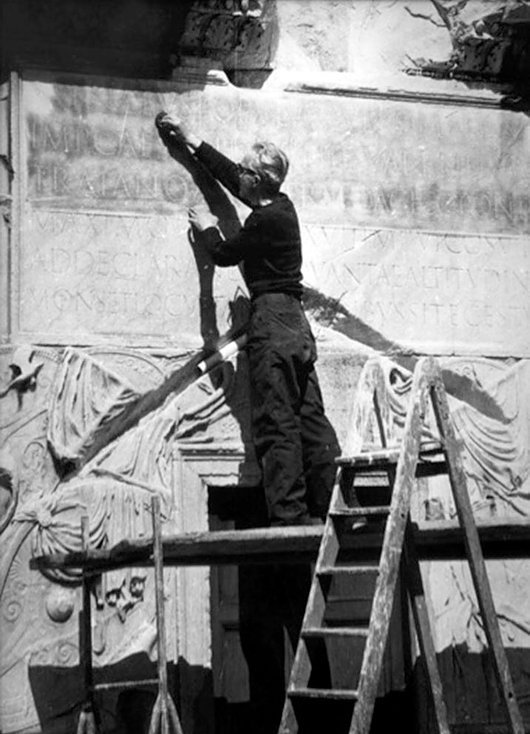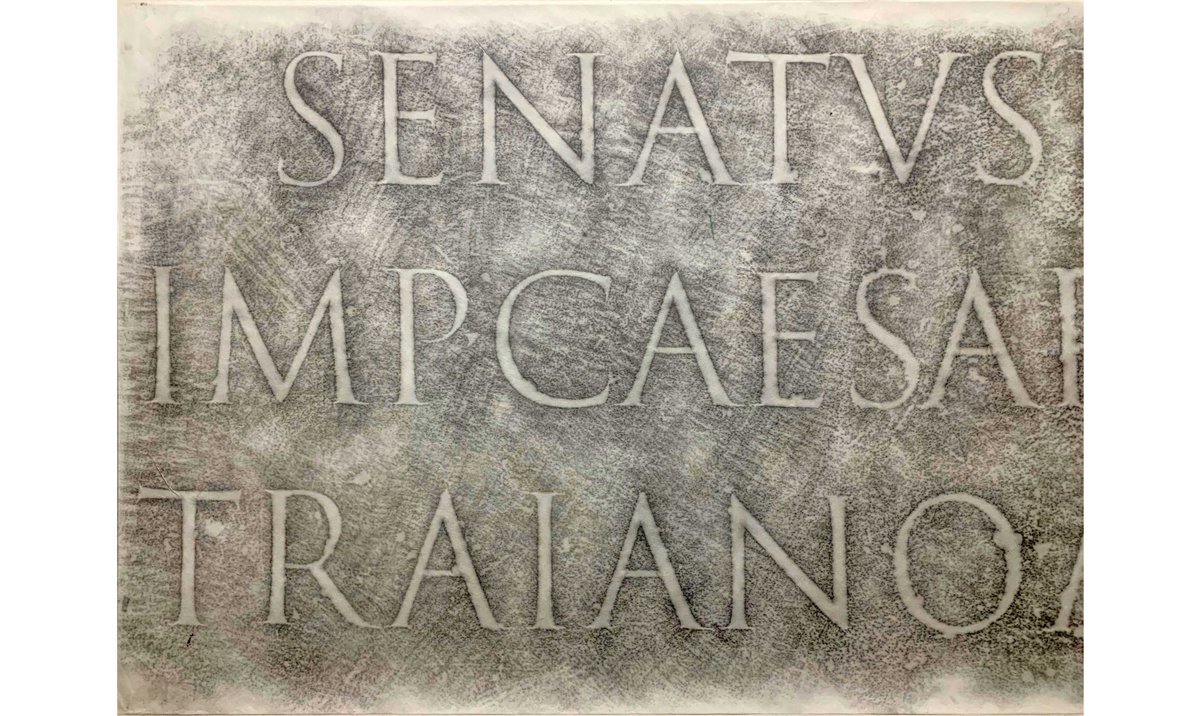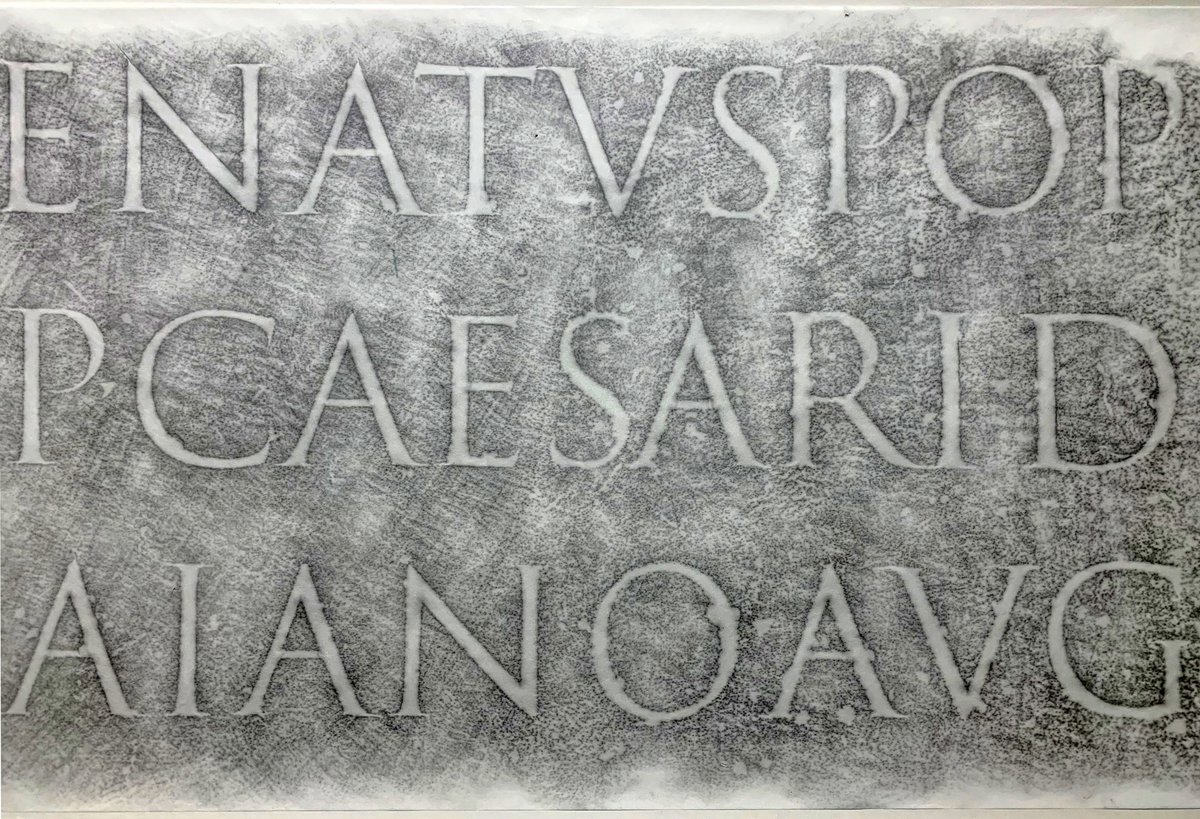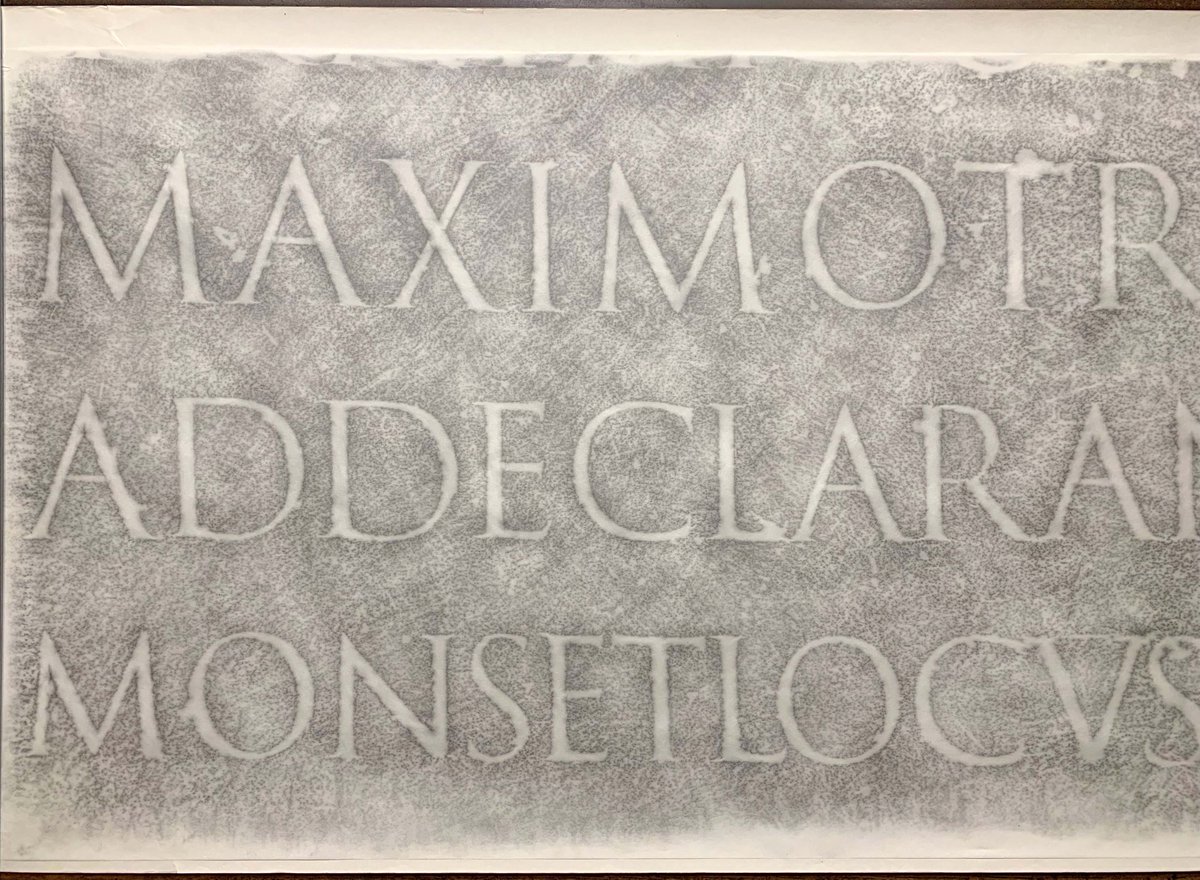SENATVS POPVLVSQVE ROMANVS / IMPeratori CAESARI DIVI NERVAE FilioNERVAE / TRAIANO AVGusto GERManico DACICO PONTIFici
The Senate and the People of Rome to the Emperor, Caesar Nerva, son of the deified Nerva, Traianus Augustus, Germanicus, Dacicus, Pontifex [Maximus]
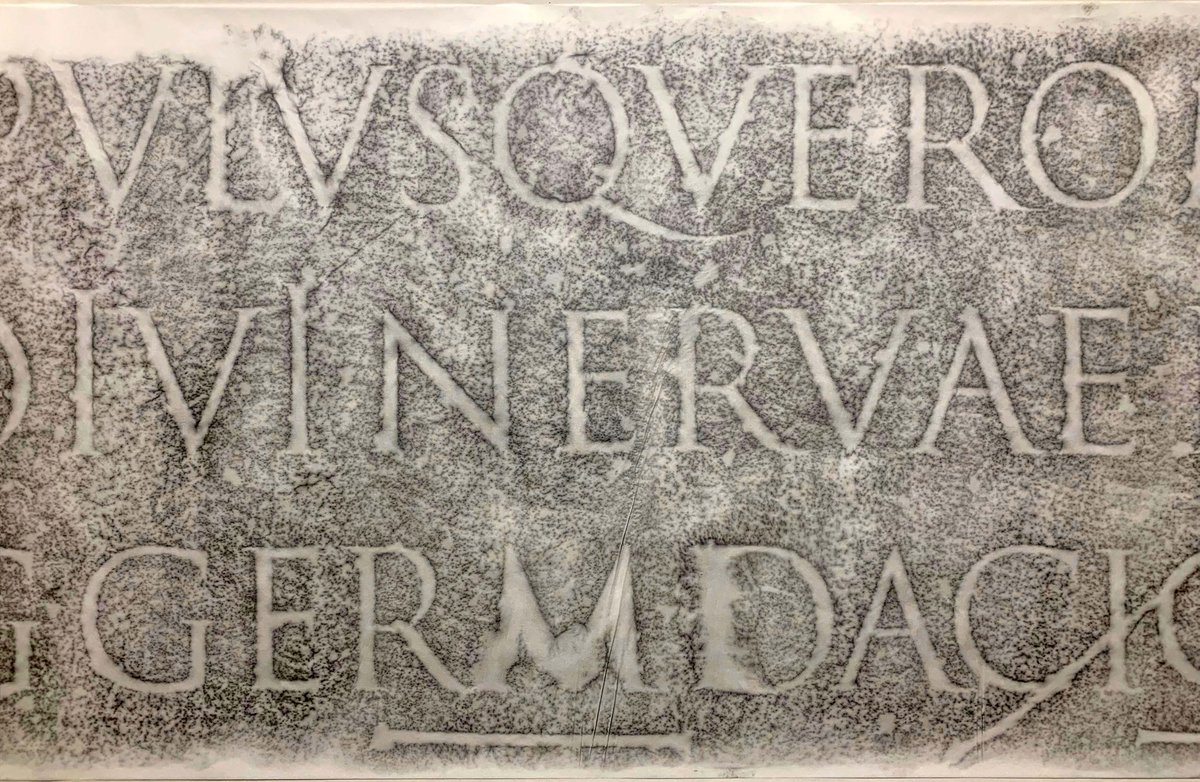
So we've now covered all of:
SENATVS POPVLVSQVE ROMANVS / IMP CAESARI DIVI NERVAE F NERVAE / TRAIANO AVG GERM DACICO PONTIF
Later this week - the start of the lower three lines!
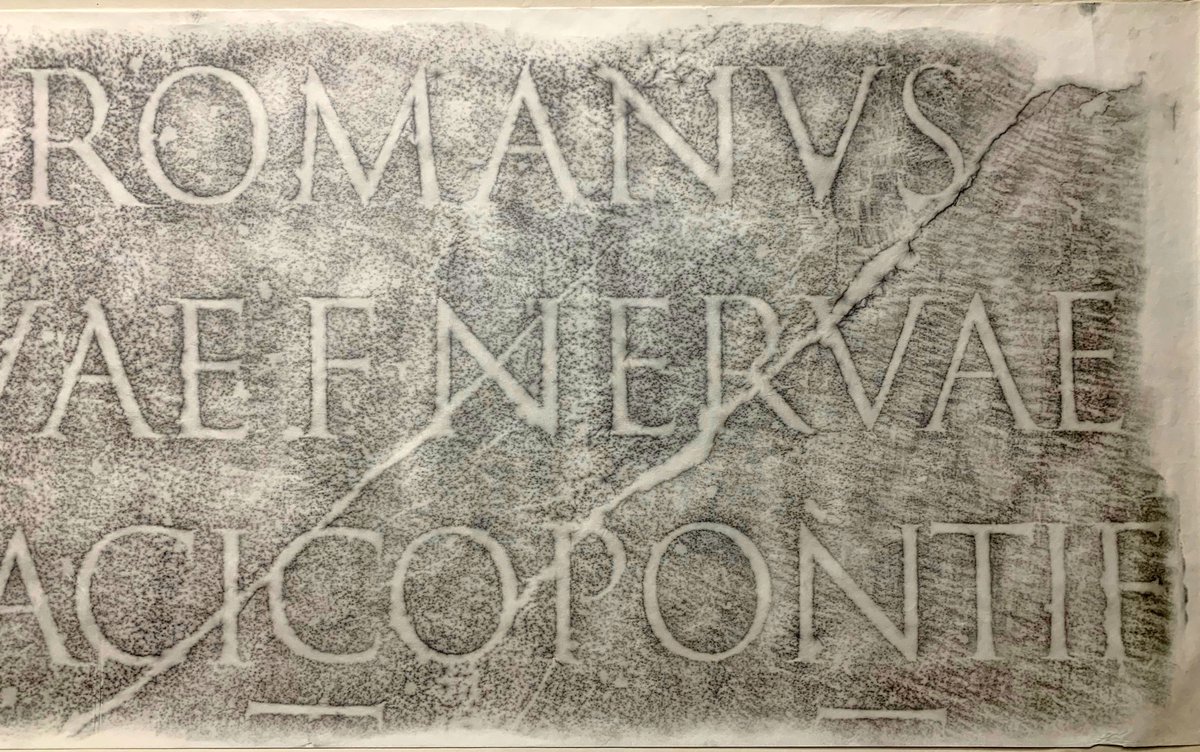
[DR Dudley, Urbs Roma. Aberd.1967]





